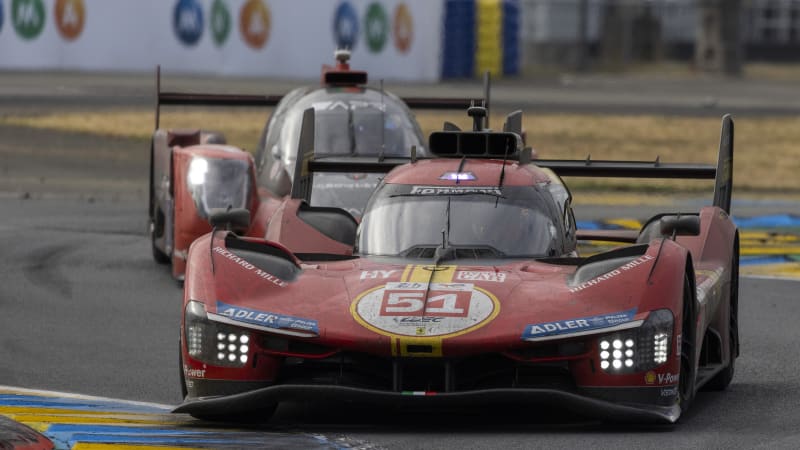LE MANS, France — Ferrari
ended a 50-year absence from the 24 Hours of
Le Mans by toppling mighty
Toyota in the centenary running of the most iconic
sports car race in the world.
Ferrari last competed at Le Mans in 1973 but returned to Circuit de la Sarthe this year as part of a new hyperclass category that features hybrid technology.
The hyperclass came from a rules convergence that both allowed competitors from the United States’ sports car series, IMSA, to compete at Le Mans, and also created an enticing platform automakers viewed as an opportunity to showcase their street car technology.
Ferrari developed its program — a two-car effort that competes in the World Endurance Championship — over several years in a strategy similar to what was depicted in “Ford v Ferrari,” the film that focused on the boardroom pressures and drama surrounding Ford’s 1963 successful effort to end Ferrari’s reign at Le Mans.
Only this time it was Ferrari trying to knock down a giant; the two-car Toyota Gazoo effort, which had entered the twice-round-the-clock race that ended Sunday on a five-year winning streak.
Toyota was dealt a blow before the race even began when race officials this week added additional weight to the dominant GR010s in a controversial “balance of performance” adjustment designed to level the playing field.
Ferrari in a pair of 499Ps pounced and swept the front row in qualifying and handled every challenge from Toyota. Its chances were aided overnight when Kamui Kobayashi
was wrecked out of the race, making it two versus one in favor of Ferrari.The trio of Alessandro Pier Guidi, James Calado and Antonio Giovinazzi — with Ferrari Formula One driver Charles Leclerc in the garage watching — were the easy winner. The trio had a solid lead even before defending race winner Ryō Hirakawa locked the brakes on his Toyota and hit the wall with 1 hour, 44 minutes remaining.
It took roughly three minutes for repairs
to the car, not enough time to help Chip Ganassi Racing, which carried the American flag at Le Mans for IMSA.
The centenary marked the first year IMSA’s top class was granted participation at Le Mans, and the new hyperclass brought Cadillac
back to both IMSA and WEC with Ganassi, same for
Porsche with Roger Penske
in the 86-year-old’s attempt to win one of the very few races missing on his list. It also brought a slew of new manufacturer interest to sports car racing, which helped draw a sold-out crowd of 300,000-plus spectators to the sprawling 8.467-mile (13.626 km) track.
The Ganassi Cadillacs were running third and fourth when Hirakawa spun — eliminating the defending champions’ chances at a repeat. But it briefly created an opportunity for one or both Cadillacs to improve their finishing position.
Toyota executed flawlessly on its pit stop and the Cadillacs gained no ground. It was the WEC team of Earl Bamber, Alex Lynn and Richard Westbrook taking the final spot on the podium, with the IMSA team of Sebastien Bourdais, a Le Mans native, Renger van der Zande and Scott Dixon finishing fourth.
Ferrari’s second car finished fifth, one spot ahead of the top-finishing Porsche from Team Penske. His other two 963s both had early retirements.
The third Cadillac, fielded by Action Express Racing out of IMSA, crashed on the first lap of the race and was never in contention. That team is supported by IMSA and NASCAR
NASCAR last had a presence at Le Mans in 1976 and returned this year with a version of its second-year Next Gen car. The ”Garage 56″ car was fielded by Hendrick Motorsports, Chevrolet and Goodyear, the winningest team, manufacturer and tire supplier in NASCAR’s 75 years.
